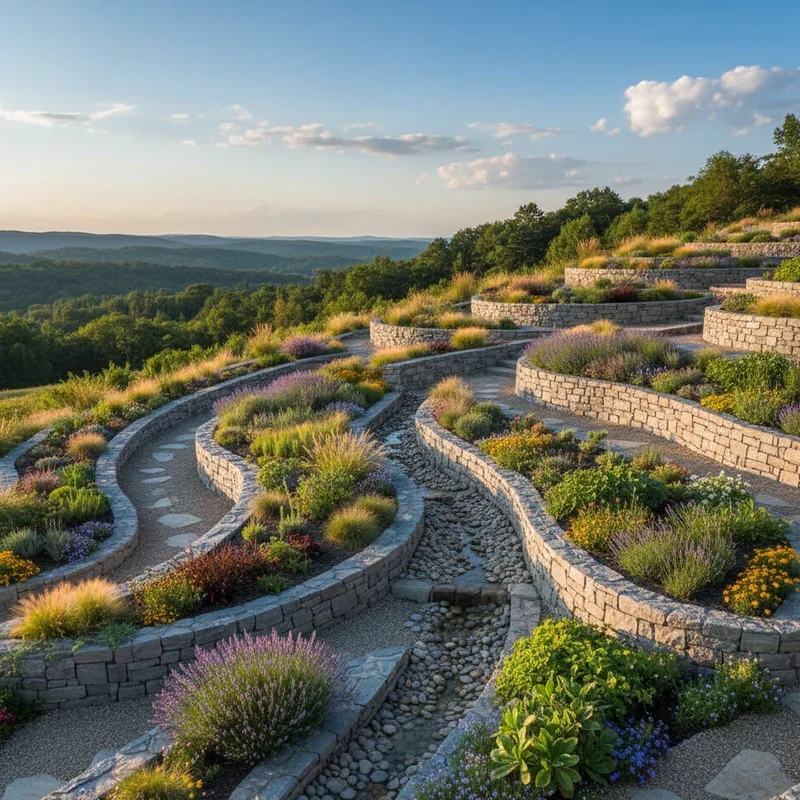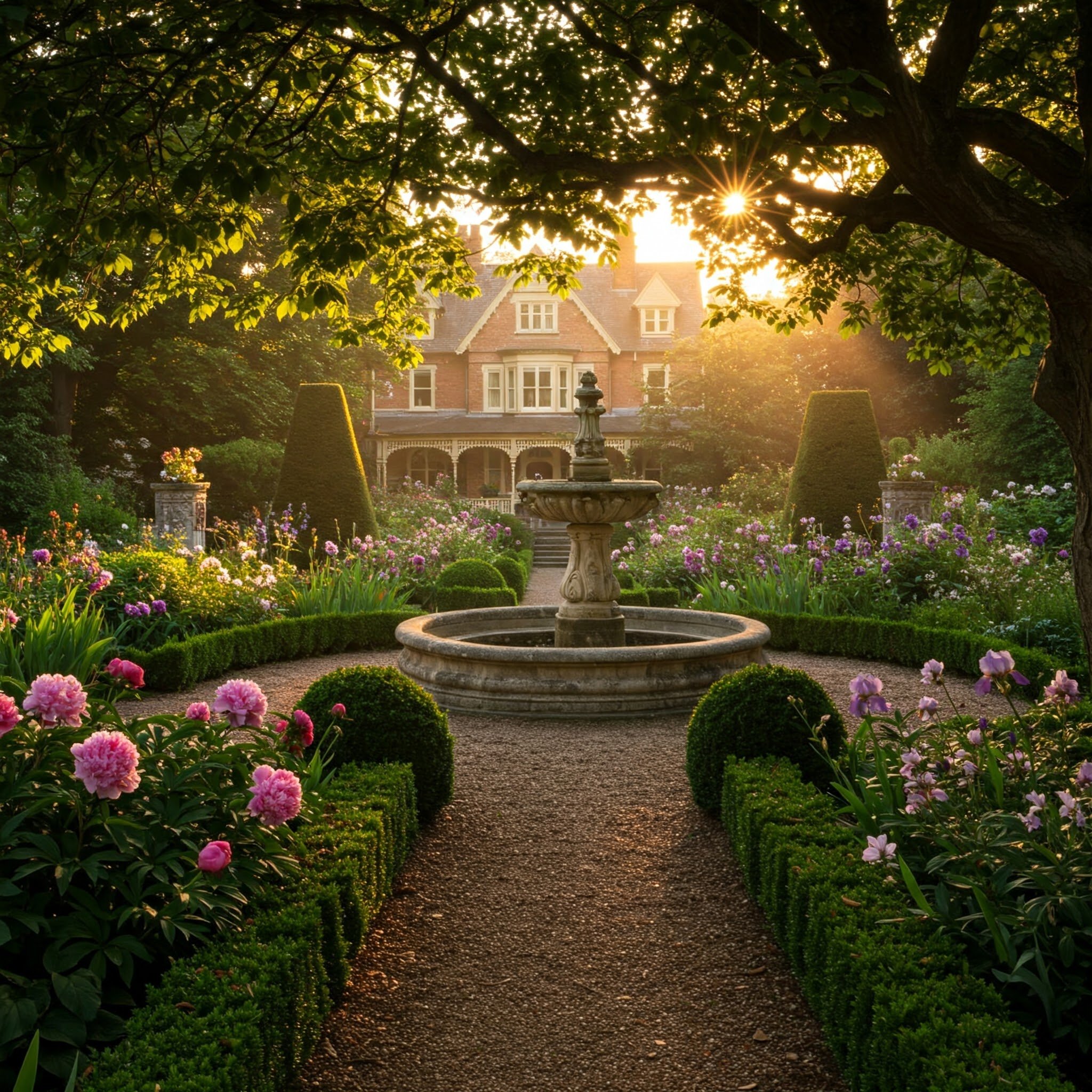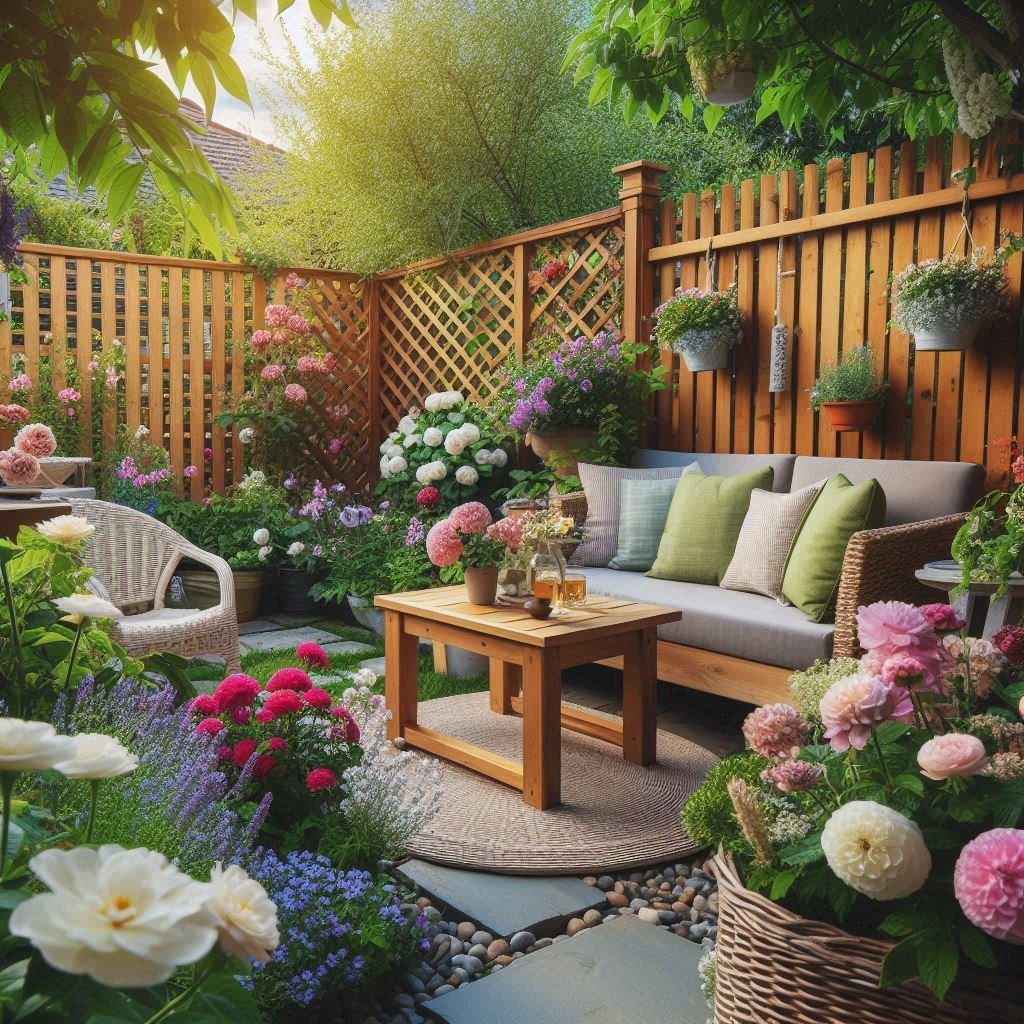15 Sloping Garden Ideas for Creative and Practical Yards
Transform challenging slopes into stunning garden features with 15 creative ideas. Discover practical solutions for beautiful hillside landscaping!
Ever looked at your sloping yard and felt like you're fighting an uphill battle, literally? You're not alone in this gravitational challenge. That hillside that seems determined to defeat your gardening dreams is actually a blessing in disguise, waiting to become the most interesting feature of your property. While flat gardens can feel predictable, slopes offer natural drama, creating opportunities for waterfalls, terraces, and views that make neighbors peek over fences in envy. Think of your slope as nature's amphitheater, where every level becomes a stage for different plants to perform. Rather than wrestling with gravity, why not dance with it? Sloping gardens provide better drainage, varied microclimates, and the chance to create multiple garden rooms at different elevations. From cascading water features that follow natural contours to terraced vegetable gardens that maximize every square foot, slopes invite creativity that flat yards simply can't match. Ready to stop seeing your slope as a problem and start seeing it as your garden's greatest asset? Let's explore fifteen brilliant ways to transform that challenging hillside into a landscaping masterpiece.
1. Terraced Garden Beds with Retaining Walls
Transform your slope into a series of level planting areas using retaining walls that create usable terraces from unusable inclines. This ancient technique, perfected by civilizations from Peru to China, turns mountains into gardens one level at a time. Each terrace becomes its own microenvironment where you can grow different plants suited to varying sun exposures and moisture levels. You're essentially creating multiple gardens stacked like a wedding cake, each layer offering unique growing conditions. Materials range from natural stone for rustic charm to modern concrete blocks for contemporary appeal. The walls themselves become design features, adding architectural interest while solving erosion problems. This solution particularly suits vegetable gardens where level ground makes maintenance easier. Include stairs or pathways between levels for easy access and visual flow. The terraced approach maximizes planting space while minimizing water runoff and soil erosion effectively.
2. Cascading Water Features Down Natural Slopes
Let gravity become your garden's best friend by installing water features that follow your slope's natural contours beautifully. This approach turns the challenge of elevation change into an asset, creating movement and sound that flat gardens envy. Start with a pond or reservoir at the top, allowing water to tumble down through streams, falls, or fountains. You're harnessing physics to create magic, letting nature do the heavy lifting while you enjoy the results. Rocky slopes provide perfect foundations for naturalistic streams that look like they've always belonged. The sound of moving water masks traffic noise while attracting birds and wildlife. This design works particularly well when visible from indoor living spaces or patios. Include aquatic plants along the water's path for filtration and visual interest. Recirculating pumps keep water flowing efficiently without waste. LED lighting transforms these features into nighttime focal points that shimmer and dance.
3. Stepped Pathway with Integrated Plantings
Create a journey through your sloped garden with stepped pathways that incorporate planting pockets between risers and along edges. This design makes slopes accessible while turning necessary infrastructure into beautiful garden features that blend function with form. Each step becomes an opportunity for creativity, with materials ranging from natural stone to recycled concrete. You're building more than just access; you're crafting an experience that changes with every elevation. Low-growing herbs or groundcovers soften hard edges while releasing fragrance when brushed by passing feet. The rhythm of steps naturally slows visitors, encouraging them to notice planted details. This approach suits both formal designs with uniform steps and informal gardens with irregular spacing. Include landings periodically for rest spots that double as viewing platforms. Handrails disguised as trellises support climbing plants while providing safety. The integrated plantings help stabilize soil while making maintenance paths beautiful rather than purely functional.
4. Rock Garden on Steep Inclines
Embrace your slope's challenging angle by creating a rock garden that mimics natural mountain landscapes in miniature. This low-maintenance solution works with gravity rather than against it, using stones to create pockets for alpine plants. Position rocks to look naturally placed, partially burying larger specimens for authentic appearance that seems carved by time. You're recreating nature's own erosion control system while adding year-round structural interest to your garden. Alpine plants naturally suit these conditions, thriving in excellent drainage and full sun exposure. The rocks absorb heat during the day, creating favorable microclimates for tender plants. This design particularly suits dry climates or areas where irrigation is challenging. Include various rock sizes for visual interest and to create different planting opportunities. Gravel mulch between rocks suppresses weeds while maintaining the naturalistic aesthetic. Choose plants with different blooming seasons to ensure continuous color throughout the growing year.
5. Sloped Wildflower Meadow
Convert your hillside into a low-maintenance wildflower meadow that changes with seasons while supporting local pollinators abundantly. This naturalistic approach requires minimal intervention once established, working with nature's own processes rather than fighting them. Select native wildflowers adapted to your climate and soil conditions for best success rates. You're creating a living tapestry that paints itself differently each year as various species dominate. The deep roots of meadow plants excel at erosion control while requiring no supplemental watering once established. This solution particularly suits large slopes where traditional gardening would be labor-intensive or impractical. Mow paths through the meadow for access and to create a designed-yet-wild aesthetic. Spring bulbs naturalized throughout provide early color before wildflowers take over. The meadow attracts butterflies, bees, and birds, turning your slope into a wildlife haven. Annual mowing in late fall maintains the meadow while allowing seeds to disperse naturally.
6. Multi-Level Deck System
Build a series of connected decks that step down your slope, creating outdoor living spaces at various elevations. This architectural solution provides level areas for furniture and activities while preserving the natural grade beneath. Each deck level can serve different purposes: dining, lounging, or hot tub placement with privacy. You're essentially building outdoor rooms that float above the slope, maximizing usability without major earthwork. Cable railings maintain views while ensuring safety across all levels of your deck system. The space beneath decks offers storage opportunities or shade garden areas for tender plants. This design works particularly well for slopes adjacent to houses, extending living space outdoors. Include built-in planters to integrate greenery into the hardscape structure seamlessly. Varied deck sizes and shapes prevent monotony while adapting to slope irregularities. Strategic lighting makes evening use safe and creates dramatic shadows that highlight the multi-level design.
7. Hillside Vineyard or Orchard
Channel your inner vintner by planting grapevines or fruit trees that thrive on well-drained slopes traditionally favored by orchardists. This productive use of sloped land follows centuries-old agricultural wisdom that recognizes slopes' advantages for fruit production. The incline provides excellent air drainage, reducing frost damage and fungal diseases that plague flat plantings. You're creating an edible landscape that's both beautiful and bountiful, offering seasonal interest year-round. Terraced rows follow contour lines, minimizing erosion while maximizing sun exposure for ripening fruit. The linear planting pattern adds structure to otherwise chaotic slopes, creating pleasing geometric patterns. This approach particularly suits Mediterranean climates or anywhere with good sun exposure. Support structures for vines or espalier systems for trees become architectural elements themselves. The harvest provides tangible rewards for your landscaping efforts beyond mere visual appeal. Consider underplanting with herbs or flowers that benefit fruit production while adding beauty.
8. Erosion Control with Deep-Rooted Groundcovers
Combat erosion naturally by establishing deep-rooted groundcovers that stabilize soil while creating verdant carpets across your slope. This living mulch approach provides year-round coverage that adapts to seasonal changes while requiring minimal maintenance. Select plants based on sun exposure, with options ranging from sedums for sun to pachysandra for shade. You're installing nature's own erosion control system that gets stronger over time rather than deteriorating. The interwoven root systems create underground networks that hold soil better than any mechanical solution. This method particularly suits large areas where other solutions would be cost-prohibitive or visually overwhelming. Mix flowering and evergreen varieties for continuous interest throughout all seasons effectively. The low growth habit eliminates mowing on dangerous slopes while maintaining neat appearance. Many groundcovers spread naturally, filling gaps and replacing themselves as needed over time. Include stepping stone pathways through groundcover areas for maintenance access without damaging plants.
9. Zigzag Pathways for Gentle Ascent
Design switchback paths that traverse your slope at comfortable angles, making steep climbs manageable and enjoyable. This serpentine approach extends the journey while reducing the grade to levels anyone can navigate comfortably. Each turn becomes an opportunity for a new view or garden vignette that rewards the journey. You're creating anticipation and discovery, turning a simple climb into an adventure through your garden. Wide curves feel more natural than sharp angles while providing space for plantings at each bend. The extended path length allows for gradual elevation change that doesn't leave visitors breathless. This design particularly suits gardens where accessibility is important for elderly visitors or those with mobility challenges. Include benches at switchback turns for rest stops with strategically framed views. Border plantings along the path create a sense of enclosure and intimacy despite the open slope. Materials can vary by section, adding interest while maintaining cohesion through consistent width or edging.
10. Raised Vegetable Garden Tiers
Maximize food production on slopes by building raised beds that create level growing spaces while improving accessibility significantly. This systematic approach turns challenging topography into productive gardens that are easier to maintain than flat equivalents. Each tier can focus on different crops based on sun exposure and water requirements naturally occurring at different elevations. You're farming vertically, using gravity to assist with irrigation as water naturally flows from upper to lower beds. The raised construction improves drainage while making planting, weeding, and harvesting more comfortable. This solution particularly suits kitchen gardens where regular access is essential for harvesting fresh ingredients. Build beds from rot-resistant wood, stone, or concrete blocks depending on budget and aesthetic preferences. Include pathways between tiers wide enough for wheelbarrow access during soil amendment or harvest time. The structured layout makes crop rotation planning easier while maximizing every square foot of growing space available.
11. Natural Stone Staircase Garden
Craft a stone staircase that becomes a garden feature itself, with plantings cascading over edges and filling joints. This organic approach integrates hardscaping with softscaping, creating transitions that feel discovered rather than constructed. Use locally sourced stone for authentic regional character while keeping costs reasonable and supporting local suppliers. You're building infrastructure that ages gracefully, becoming more beautiful as plants colonize crevices and moss softens edges. The irregular nature of natural stone allows for creative placement that follows the slope's natural contours. This design particularly suits cottage gardens or naturalistic landscapes where formal symmetry isn't desired. Plant creeping thymes or sedums between stones for fragrance and color at foot level. Include larger planting pockets beside the staircase for specimen plants or seasonal displays. Proper drainage beneath stairs prevents frost heaving while maintaining structural integrity over time. Night lighting tucked beneath overhanging stones creates magical ambiance for evening garden tours.
12. Slope-Side Seating Areas with Views
Carve out intimate seating nooks at various elevations along your slope, creating destinations that celebrate views. These pause points transform slopes from obstacles to opportunities for contemplation and entertainment with strategic placement. Each seating area can have different character: meditation bench, conversation circle, or dining terrace with unique perspectives. You're designing experiences, not just places to sit, making your slope a journey of discovery. Retaining walls double as bench backs while protecting seating areas from erosion or sliding soil. The elevation provides natural privacy screening from neighbors while opening up distant vistas beautifully. This approach particularly suits slopes with attractive views worth highlighting and celebrating properly. Include shade elements like pergolas or umbrellas to ensure comfort during hot afternoons. Surround seating with fragrant plants that enhance the sensory experience of these special spots. Access paths connecting seating areas create circuits for garden tours or morning coffee wanderings.
13. Rain Garden at the Base of Slopes
Harness natural water flow by creating rain gardens where slopes meet level ground, turning drainage into opportunity. This sustainable solution manages stormwater while creating habitats for moisture-loving plants and visiting wildlife. Design depressions that temporarily hold water, allowing it to infiltrate slowly rather than running off rapidly. You're working with natural hydrology to solve drainage problems while adding ecological value to your landscape. Native plants adapted to periodic flooding thrive in these conditions without supplemental irrigation needs. The rain garden becomes a biofilter, cleaning runoff before it enters storm systems or waterways. This feature particularly suits properties with drainage issues or environmental consciousness about water management. Include rocks or logs for visual interest and wildlife habitat during dry periods. The seasonal water availability creates dynamic gardens that change appearance with rainfall patterns. Educational signage can highlight the environmental benefits, inspiring neighbors to create their own rain gardens.
14. Vertical Garden Walls on Steep Grades
Transform near-vertical slopes into living walls using modular planting systems or terraced pockets carved into banks. This innovative approach maximizes planting space on slopes too steep for traditional gardening methods effectively. Geotextile-backed systems or concrete modules create stable growing environments that resist erosion while supporting plants. You're turning unusable vertical space into productive gardens that demand attention and admiration from viewers. The vertical orientation naturally improves drainage while making maintenance accessible from top or bottom. This solution particularly suits small yards where horizontal space is precious but vertical space abounds. Include drip irrigation for consistent moisture without erosion that hand watering might cause. Select plants based on their position: sun-lovers up top, shade-tolerant varieties below overhangs. The living wall provides insulation, cooling, and habitat while solving challenging slope problems. Seasonal changes in planted materials create ever-evolving artworks that transform throughout the year.
15. Children's Hillside Adventure Play Area
Convert your slope into a natural playground where kids explore, climb, and imagine while developing physical skills. This creative approach makes slopes exciting rather than dangerous, with safety features integrated into fun designs. Include slides that follow natural contours, climbing walls against retaining structures, and tunnels through planted areas. You're creating childhood memories while solving landscaping challenges in ways that benefit the whole family. Rubber mulch or artificial turf provides safe landing zones while maintaining natural appearance aesthetically. The varied elevations naturally create zones for different age groups and activity levels. This design particularly suits families wanting to maximize outdoor play opportunities in limited space. Incorporate gardens where children can grow their own plants, learning from hands-on experience. Natural materials like logs and boulders provide climbing challenges that develop balance and confidence. Shade structures or trees ensure comfortable play even during hot summer afternoons effectively.
Conclusion
Sloping gardens offer opportunities that flat landscapes simply can't match, from dramatic water features to terraced growing spaces that maximize every square foot. These fifteen ideas prove that working with gravity rather than against it creates more interesting, functional, and beautiful outdoor spaces. Whether you choose productive solutions like orchards or purely aesthetic approaches like rock gardens, your slope can become your garden's defining feature that sets it apart from ordinary yards.
Read next: 15 Courtyard Garden Ideas to Transform Small Outdoor Spaces
Frequently Asked Questions
Q1: How do I prevent erosion on my slope?
A1: Plant deep-rooted groundcovers, install retaining walls, or create terraces to stabilize soil effectively.
Q2: What's the best angle for garden slopes?
A2: Slopes between 15-30 degrees work well; steeper grades need terracing or retaining walls installed.
Q3: Can I build structures on sloped land?
A3: Yes, with proper engineering, foundations, and drainage systems to ensure long-term stability and safety.
Q4: Which plants grow best on slopes?
A4: Native groundcovers, ornamental grasses, and deep-rooted shrubs excel on slopes with good drainage.
Q5: How much does slope landscaping cost?
A5: Costs vary from $15-100 per square foot depending on materials and complexity of design.




































